Where To Find Saved Audio Messages On IPhone IOS 15?
Launch your iPhone application for Settings. Select Messages as an option. Then, look for the section that is for audio messages. Typically, this is located in the lower part of the interface.
If you’ve received or sent an audio message via the iPhone operating iOS 15, it is saved automatically to the Messages app. To locate the audio messages that have been saved, you need to open the Messages app and locate the conversation with an audio recording. Click on the message to reveal it, then search for the audio message you wish to hear. Once you’ve found that audio clip, tap the message to hear it.
You can also use the search feature in the Messages app to locate certain audio-related messages. To perform this, move your finger downward from above the Messages app to open the search feature. Input a keyword phrase that is related to what you are searching for. Any relevant messages will be displayed in the results of your search.
It’s important to remember that audio messages can be timed before expiring, and they will be deleted automatically. The default settings for audio messages expire in two minutes, but you can alter this in the Settings app. To change it, go to Settings > Messages > Expire and select an alternate expiration time among the options.
To locate saved audio messages iPhone to find saved audio messages on your iPhone running iOS 15:
- Simply open the Messages app and find the conversation that contains the message.
- Click upon the conversation to play it. You can also use the search feature to locate particular audio conversations.
- Be aware that audio messages have an expiration date before being deleted.
- Alter the expiration date if you require them to be kept longer.
Can I Retrieve Audio Messages That Were Deleted Without a Backup?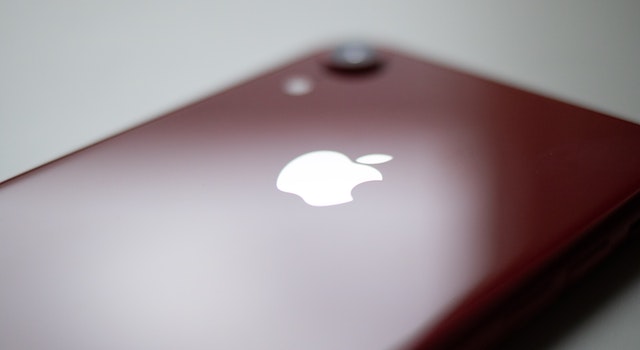
There is a way to restore deleted audio messages from your iPhone without backups. However, the performance of the process depends on many aspects. Here are a few options that you can test:
Check the Recently Deleted Folder: If you’ve deleted a recorded message within the last 30-day period, it might still be retrievable within the Recently Deleted folder. To find this folder, start your Photos app and go into Albums > Recently Deleted. If you see the deleted audio message, you can tap it, then select the “Recover” option to restore the message to your device.
Use a Third-Party Data Recovery Tool: If your audio file isn’t in the Recently Deleted folder, you might want to try an external data recovery tool. A variety of these tools on the internet claim to recover deleted files from iOS devices and audio messages. But remember that these tools aren’t 100% guaranteed to work, and they risk losing data or causing further harm to the device.
Contact Apple Support: If the above strategies don’t succeed, you could contact Apple Support for assistance. They may be able to assist you with recovering the deleted audio file or suggest alternative solutions for recovering data. But it’s important to remember that if your message was deleted within 30 days of the date it was deleted, it’s unlikely to be recovered.
Prevention for the Future: To prevent losing vital audio recordings in the future, it’s an excellent practice to regularly back up your device with iCloud and iTunes. If there’s a mistake in deleting something, you can restore it from your backup. It is also possible to enable the messages in the iCloud feature that automatically backups your attachments and messages to iCloud and ensures they are on file across all devices.
Although you can retrieve deleted audio messages with no backup, the process’s effectiveness depends on several variables. Checking the Recently Deleted folder and using third-party tools for data recovery are options to consider. However, contact with Apple Support is also worth taking into consideration. To avoid losing data in the future, make sure you regularly back up your device and turn on messages to iCloud.
Do I Have The Ability To Transfer Messages In Audio Format From My iPhone To An Android Device?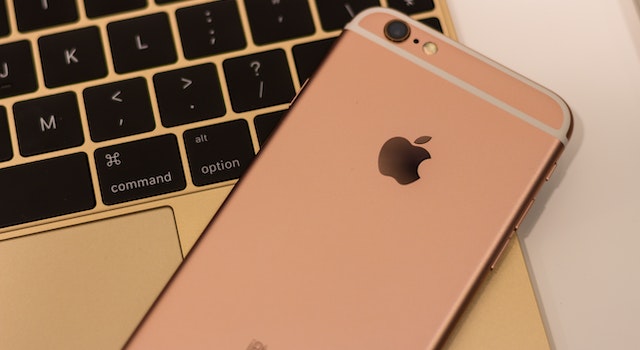
Transferring audio files from the iPhone onto an Android device isn’t easy because both operating systems aren’t compatible. But there are a few options you could try:
Use a Third-Party Transfer Tool: A variety of third-party transfer software on the market claims to transfer data, such as audio messages on the iPhone, onto the Android device. These programs generally require that you connect each device to a PC and follow the directions provided by the program. But remember that these tools aren’t always 100% reliable, and there’s a chance of losing data or having other problems.
Email or Messaging App: One method for transferring audio messages is using messaging or email applications that work for iOS and Android. To accomplish this, launch your Messages application on your iPhone, search for the conversation containing the audio message you want to share, then tap and hold the message. Choose “More,” then share the message by app or email. Then, you can transfer the message to an Android phone and save the message to the device.
Manually Record and Transfer: Another option is to record the audio on the iPhone and later transfer it to an Android device. To do this, you need to play the message on your iPhone and then switch to a different gadget to capture it. You can do this using any recording app on your device, for example, Voice Recorder. Voice recorder app on an Android device. Once you’ve recorded the audio, you can upload it to the Android device, including email, messages, and apps like Bluetooth and USB.
Transferring audio files from your iPhone to an Android device can be challenging; however, there are a few ways to do it. Utilizing a third-party transfer tool, messaging apps, email, or even manually recording and transferring are all alternatives. Be aware that these options aren’t always 100% reliable, and they could be a source of data loss or other problems.
Can I Change the Default Audio Message Expiration Time?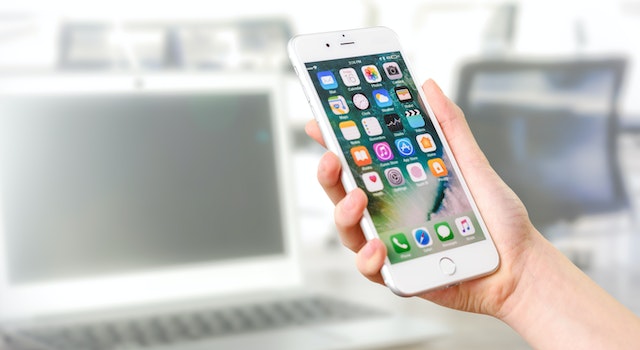
Yes, it’s possible to alter the default date on your iPhone. Here’s how:
Open the Settings App: To begin, first open the Settings application on your iPhone.
Go to Messages Settings: Scroll down, tap “Messages,” and tap on the “Messages” option to open the settings for Messages.
Change the Audio Message Expiration Time: In the Settings for Messages, look for the “Expire” option and tap on it. There are several options to choose the time for expiration that range from “Never” to “After 2 Minutes.” Select the option you would prefer to alter the default expiration time.
Save The Changes: After you’ve selected your preferred option, quit the application. The new expiration date will be your default setting for any audio message that you make or receive.
It is important to remember that altering the expiration period only affects new audio messages. If you’ve previously had audio or text messages using the old expiration time, these messages will expire at the time of the original limitation. Also, changing the expiration date doesn’t ensure that the audio messages will remain on your device forever since they remain at risk of being deleted if the device cannot store space or when the message is deleted manually.
In the end, changing the default expiration date is a simple procedure. Go to the settings for Messages in the Settings app, choose “Expire,” then click the “Expire” option, and select the time you want to expire. Remember that changing the expiration date only affects new messages and cannot guarantee the storage of audio messages.
Can I Use Siri To Send Audio Messages?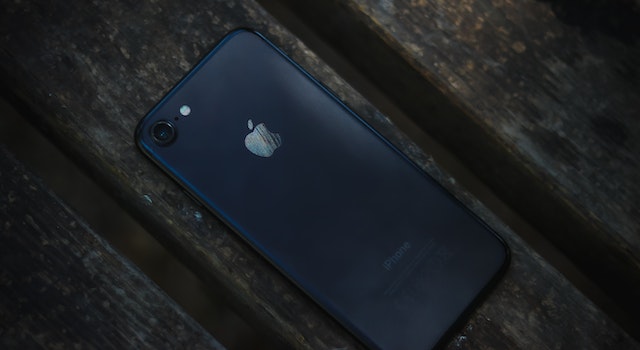
Yes, you can use Siri to make audio calls on your iPhone. Here’s how:
Activate Siri: To begin, turn on Siri by holding and pressing the Home or Tilt button on your iPhone or using an available “Hey Siri” voice command.
Say the Command: When Siri is turned on, say, “Send an audio message to [contact name]” or an equivalent command that incorporates the recipient’s name.
Record the Message: Siri will ask you to take a recording of your message. Simply talk into the microphone, and Siri will translate it into text and then ask you to verify the message before submitting it.
Send the Message: After you confirm your message, Siri can send an audio signal directly to the person who received it. If you decide to change your mind or rescind the message, simply use “Cancel” or “Delete” to block your message from being delivered.
It is important to note that Siri can transmit audio-based messages only to contacts with an iPhone or another Apple device compatible with iMessage. If the recipient doesn’t possess an Apple device or isn’t using iMessage, then Siri isn’t able to send an audio-only message. In addition, Siri may not always accurately transcribe the audio message. Therefore, it’s crucial to double-check the message before sending it.
Using Siri to transmit audio messages is a simple and hands-free method of communicating with your friends. Simply enable Siri by giving the command, write your message, and confirm it before sending it. Be aware of this: Siri can only transmit audio messages to people via iMessage, and the transcription might not be precise.
How To Save And Delete Audio Messages?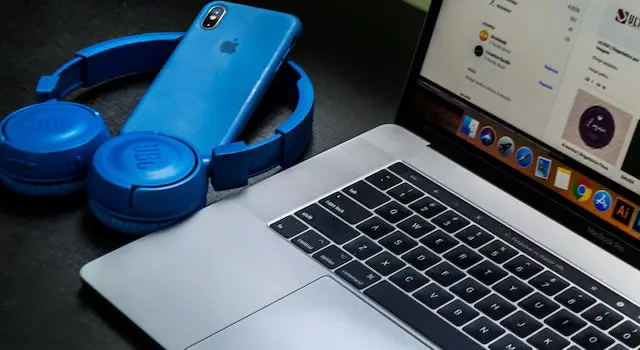
Below are some steps you can follow to save and erase audio messages from your iPhone:
Save An Audio Message
- Start your Messages app and locate the conversation containing the audio message you want to save.
- Hold and tap the audio until you see the options menu.
- Choose”Save,” then click the “Save” option to save the audio message to your device.
- The audio file saved will be displayed on the smartphone’s Voice Memos app.
Delete An Audio Message
- Start the Messages app and locate the conversation containing the audio message you wish to erase.
- Hold and tap the audio until you can see the options menu.
- Choose the “Delete” option to remove the audio message from the conversation.
- If you’d like to erase the audio message for good, tap the “Delete” option again when asked.
It is important to remember that audio messages are subject to the ability to be timed before expiring, and they will be deleted automatically. The default settings for audio messages expire after 2 minutes, but you can change this within your Settings app. To change it, go into Settings, Messages, and Expire and select a different expiration time from the choices.
In addition, if you would like to erase all conversations and the audio messages accompanying them, you can leave the conversation within the Messages app and then select the “Delete” option. This will erase all conversations, including all attachments and messages, from your phone.
The process of deleting and saving audio messages on your iPhone is simple. To save a message, hold and tap the message until you click “Save.” To erase audio messages, simply hold and tap the message until you choose “Delete.” Be aware that audio messages are subject to an expiration date before expiration and are deleted automatically, and you can modify the expiration time within the Settings app.
How To Recover Deleted Audio Messages?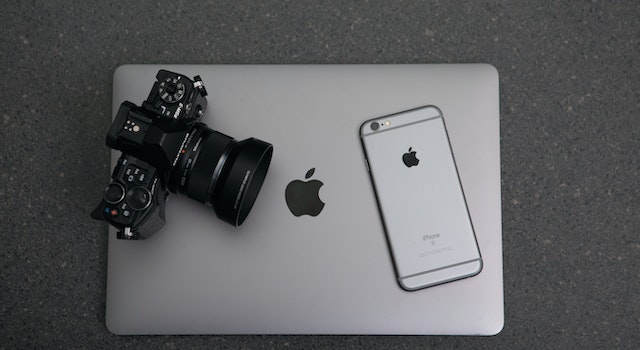
If you accidentally erased the important audio message on your iPhone, there are some actions you can take to try to retrieve it:
Check the Recently Deleted Folder: If you delete any audio messages, they’re transferred to the Recently Deleted folder, where they will stay for 30 days before being permanently deleted. To view your Recently Deleted folder, open the Photos app, go into Albums, and then Recently Deleted. If you locate the deleted audio message, you can tap it, then select the “Recover” option to restore the message to your device.
Restore Backups From iCloud Backup: If you’ve got an iCloud backup that was created before the audio file was erased, you may restore your device from the backup to retrieve deleted messages. To accomplish this, head to Settings > General > Reset, and then All Content and Settings,” then select the “Delete All Content and Settings” option. Once your device has been erased, you can restore to an iCloud backup in the initial setup procedure. If the backup includes the deleted audio messages, they can be restored to the device.
Backup and Restore From iTunes Backup: If you’ve got an iTunes backup created before that audio file was erased, you can restore your device using that backup to retrieve the deleted audio message. To accomplish this, connect your device to your iTunes computer. Then, select the device you want to restore in iTunes. Select “Restore Backup” and then click on the “Restore Backup” option and select the backup created before an audio file was erased. If the backup has the audio message deleted, it will be restored to your device.
Use a Third-Party Data Recovery Tool: If none of the methods above succeed, use a third-party data recovery tool. There are a variety of these tools online that claim to recover deleted files from iOS devices as well as audio messages. Be aware that these tools aren’t guaranteed to work, and they risk data loss or harm to the device.
You can use various methods to retrieve deleted audio messages from your iPhone, such as going through your Recently Deleted folder, restoring using your iCloud or iTunes backup, or using an external data recovery tool. Regularly back up your device to increase the chance of recovering missing data.
FAQ’s
Where can I find saved audio messages on iPhone running iOS 15?
To locate your saved audio messages on iOS 15, open the “Messages” app and navigate to the conversation containing the audio message. Tap on the contact’s name or picture at the top of the screen, and you should see the saved audio messages within that conversation.
Can I access my saved audio messages directly from the main screen in iOS 15?
No, in iOS 15, you cannot access saved audio messages directly from the main screen. You need to open the “Messages” app and go into the specific conversation to find and access your saved audio messages.
How do I listen to saved audio messages on iOS 15?
Once you have located the conversation with the saved audio messages, tap on the audio message you wish to listen to. It should automatically play, and you can adjust the volume using the device’s volume buttons or control center.
Are saved audio messages backed up to iCloud in iOS 15?
Yes, saved audio messages are included in your iCloud backups on iOS 15. If you have iCloud backup enabled, your audio messages will be backed up along with other messages and data from your iPhone.
Can I export or share saved audio messages on iOS 15?
Unfortunately, iOS 15 does not provide a built-in feature to export or share individual audio messages. However, you can forward the entire conversation containing the audio message to another contact if you wish to share it.
How long are saved audio messages kept on iPhone running iOS 15?
By default, saved audio messages are kept indefinitely on your iPhone in iOS 15 unless you manually delete them. However, it’s worth noting that if you have limited storage space, your device may automatically remove older messages, including audio messages, to free up space.
Where To Find Saved Audio Messages On IPhone IOS 15?
Launch your iPhone application for Settings. Select Messages as an option. Then, look for the section that is for audio messages. Typically, this is located in the lower part of the interface.
If you’ve received or sent an audio message via the iPhone operating iOS 15, it is saved automatically to the Messages app. To locate the audio messages that have been saved, you need to open the Messages app and locate the conversation with an audio recording. Click on the message to reveal it, then search for the audio message you wish to hear. Once you’ve found that audio clip, tap the message to hear it.
You can also use the search feature in the Messages app to locate certain audio-related messages. To perform this, move your finger downward from above the Messages app to open the search feature. Input a keyword phrase that is related to what you are searching for. Any relevant messages will be displayed in the results of your search.
It’s important to remember that audio messages can be timed before expiring, and they will be deleted automatically. The default settings for audio messages expire in two minutes, but you can alter this in the Settings app. To change it, go to Settings > Messages > Expire and select an alternate expiration time among the options.
To locate saved audio messages iPhone to find saved audio messages on your iPhone running iOS 15:
- Simply open the Messages app and find the conversation that contains the message.
- Click upon the conversation to play it. You can also use the search feature to locate particular audio conversations.
- Be aware that audio messages have an expiration date before being deleted.
- Alter the expiration date if you require them to be kept longer.
Can I Retrieve Audio Messages That Were Deleted Without a Backup?
There is a way to restore deleted audio messages from your iPhone without backups. However, the performance of the process depends on many aspects. Here are a few options that you can test:
Check the Recently Deleted Folder: If you’ve deleted a recorded message within the last 30-day period, it might still be retrievable within the Recently Deleted folder. To find this folder, start your Photos app and go into Albums > Recently Deleted. If you see the deleted audio message, you can tap it, then select the “Recover” option to restore the message to your device.
Use a Third-Party Data Recovery Tool: If your audio file isn’t in the Recently Deleted folder, you might want to try an external data recovery tool. A variety of these tools on the internet claim to recover deleted files from iOS devices and audio messages. But remember that these tools aren’t 100% guaranteed to work, and they risk losing data or causing further harm to the device.
Contact Apple Support: If the above strategies don’t succeed, you could contact Apple Support for assistance. They may be able to assist you with recovering the deleted audio file or suggest alternative solutions for recovering data. But it’s important to remember that if your message was deleted within 30 days of the date it was deleted, it’s unlikely to be recovered.
Prevention for the Future: To prevent losing vital audio recordings in the future, it’s an excellent practice to regularly back up your device with iCloud and iTunes. If there’s a mistake in deleting something, you can restore it from your backup. It is also possible to enable the messages in the iCloud feature that automatically backups your attachments and messages to iCloud and ensures they are on file across all devices.
Although you can retrieve deleted audio messages with no backup, the process’s effectiveness depends on several variables. Checking the Recently Deleted folder and using third-party tools for data recovery are options to consider. However, contact with Apple Support is also worth taking into consideration. To avoid losing data in the future, make sure you regularly back up your device and turn on messages to iCloud.
Do I Have The Ability To Transfer Messages In Audio Format From My iPhone To An Android Device?
Transferring audio files from the iPhone onto an Android device isn’t easy because both operating systems aren’t compatible. But there are a few options you could try:
Use a Third-Party Transfer Tool: A variety of third-party transfer software on the market claims to transfer data, such as audio messages on the iPhone, onto the Android device. These programs generally require that you connect each device to a PC and follow the directions provided by the program. But remember that these tools aren’t always 100% reliable, and there’s a chance of losing data or having other problems.
Email or Messaging App: One method for transferring audio messages is using messaging or email applications that work for iOS and Android. To accomplish this, launch your Messages application on your iPhone, search for the conversation containing the audio message you want to share, then tap and hold the message. Choose “More,” then share the message by app or email. Then, you can transfer the message to an Android phone and save the message to the device.
Manually Record and Transfer: Another option is to record the audio on the iPhone and later transfer it to an Android device. To do this, you need to play the message on your iPhone and then switch to a different gadget to capture it. You can do this using any recording app on your device, for example, Voice Recorder. Voice recorder app on an Android device. Once you’ve recorded the audio, you can upload it to the Android device, including email, messages, and apps like Bluetooth and USB.
Transferring audio files from your iPhone to an Android device can be challenging; however, there are a few ways to do it. Utilizing a third-party transfer tool, messaging apps, email, or even manually recording and transferring are all alternatives. Be aware that these options aren’t always 100% reliable, and they could be a source of data loss or other problems.
Can I Change the Default Audio Message Expiration Time?
Yes, it’s possible to alter the default date on your iPhone. Here’s how:
Open the Settings App: To begin, first open the Settings application on your iPhone.
Go to Messages Settings: Scroll down, tap “Messages,” and tap on the “Messages” option to open the settings for Messages.
Change the Audio Message Expiration Time: In the Settings for Messages, look for the “Expire” option and tap on it. There are several options to choose the time for expiration that range from “Never” to “After 2 Minutes.” Select the option you would prefer to alter the default expiration time.
Save The Changes: After you’ve selected your preferred option, quit the application. The new expiration date will be your default setting for any audio message that you make or receive.
It is important to remember that altering the expiration period only affects new audio messages. If you’ve previously had audio or text messages using the old expiration time, these messages will expire at the time of the original limitation. Also, changing the expiration date doesn’t ensure that the audio messages will remain on your device forever since they remain at risk of being deleted if the device cannot store space or when the message is deleted manually.
In the end, changing the default expiration date is a simple procedure. Go to the settings for Messages in the Settings app, choose “Expire,” then click the “Expire” option, and select the time you want to expire. Remember that changing the expiration date only affects new messages and cannot guarantee the storage of audio messages.
Can I Use Siri To Send Audio Messages?
Yes, you can use Siri to make audio calls on your iPhone. Here’s how:
Activate Siri: To begin, turn on Siri by holding and pressing the Home or Tilt button on your iPhone or using an available “Hey Siri” voice command.
Say the Command: When Siri is turned on, say, “Send an audio message to [contact name]” or an equivalent command that incorporates the recipient’s name.
Record the Message: Siri will ask you to take a recording of your message. Simply talk into the microphone, and Siri will translate it into text and then ask you to verify the message before submitting it.
Send the Message: After you confirm your message, Siri can send an audio signal directly to the person who received it. If you decide to change your mind or rescind the message, simply use “Cancel” or “Delete” to block your message from being delivered.
It is important to note that Siri can transmit audio-based messages only to contacts with an iPhone or another Apple device compatible with iMessage. If the recipient doesn’t possess an Apple device or isn’t using iMessage, then Siri isn’t able to send an audio-only message. In addition, Siri may not always accurately transcribe the audio message. Therefore, it’s crucial to double-check the message before sending it.
Using Siri to transmit audio messages is a simple and hands-free method of communicating with your friends. Simply enable Siri by giving the command, write your message, and confirm it before sending it. Be aware of this: Siri can only transmit audio messages to people via iMessage, and the transcription might not be precise.
How To Save And Delete Audio Messages?
Below are some steps you can follow to save and erase audio messages from your iPhone:
Save An Audio Message
- Start your Messages app and locate the conversation containing the audio message you want to save.
- Hold and tap the audio until you see the options menu.
- Choose”Save,” then click the “Save” option to save the audio message to your device.
- The audio file saved will be displayed on the smartphone’s Voice Memos app.
Delete An Audio Message
- Start the Messages app and locate the conversation containing the audio message you wish to erase.
- Hold and tap the audio until you can see the options menu.
- Choose the “Delete” option to remove the audio message from the conversation.
- If you’d like to erase the audio message for good, tap the “Delete” option again when asked.
It is important to remember that audio messages are subject to the ability to be timed before expiring, and they will be deleted automatically. The default settings for audio messages expire after 2 minutes, but you can change this within your Settings app. To change it, go into Settings, Messages, and Expire and select a different expiration time from the choices.
In addition, if you would like to erase all conversations and the audio messages accompanying them, you can leave the conversation within the Messages app and then select the “Delete” option. This will erase all conversations, including all attachments and messages, from your phone.
The process of deleting and saving audio messages on your iPhone is simple. To save a message, hold and tap the message until you click “Save.” To erase audio messages, simply hold and tap the message until you choose “Delete.” Be aware that audio messages are subject to an expiration date before expiration and are deleted automatically, and you can modify the expiration time within the Settings app.
How To Recover Deleted Audio Messages?
If you accidentally erased the important audio message on your iPhone, there are some actions you can take to try to retrieve it:
Check the Recently Deleted Folder: If you delete any audio messages, they’re transferred to the Recently Deleted folder, where they will stay for 30 days before being permanently deleted. To view your Recently Deleted folder, open the Photos app, go into Albums, and then Recently Deleted. If you locate the deleted audio message, you can tap it, then select the “Recover” option to restore the message to your device.
Restore Backups From iCloud Backup: If you’ve got an iCloud backup that was created before the audio file was erased, you may restore your device from the backup to retrieve deleted messages. To accomplish this, head to Settings > General > Reset, and then All Content and Settings,” then select the “Delete All Content and Settings” option. Once your device has been erased, you can restore to an iCloud backup in the initial setup procedure. If the backup includes the deleted audio messages, they can be restored to the device.
Backup and Restore From iTunes Backup: If you’ve got an iTunes backup created before that audio file was erased, you can restore your device using that backup to retrieve the deleted audio message. To accomplish this, connect your device to your iTunes computer. Then, select the device you want to restore in iTunes. Select “Restore Backup” and then click on the “Restore Backup” option and select the backup created before an audio file was erased. If the backup has the audio message deleted, it will be restored to your device.
Use a Third-Party Data Recovery Tool: If none of the methods above succeed, use a third-party data recovery tool. There are a variety of these tools online that claim to recover deleted files from iOS devices as well as audio messages. Be aware that these tools aren’t guaranteed to work, and they risk data loss or harm to the device.
You can use various methods to retrieve deleted audio messages from your iPhone, such as going through your Recently Deleted folder, restoring using your iCloud or iTunes backup, or using an external data recovery tool. Regularly back up your device to increase the chance of recovering missing data.
FAQ’s
Where can I find saved audio messages on iPhone running iOS 15?
To locate your saved audio messages on iOS 15, open the “Messages” app and navigate to the conversation containing the audio message. Tap on the contact’s name or picture at the top of the screen, and you should see the saved audio messages within that conversation.
Can I access my saved audio messages directly from the main screen in iOS 15?
No, in iOS 15, you cannot access saved audio messages directly from the main screen. You need to open the “Messages” app and go into the specific conversation to find and access your saved audio messages.
How do I listen to saved audio messages on iOS 15?
Once you have located the conversation with the saved audio messages, tap on the audio message you wish to listen to. It should automatically play, and you can adjust the volume using the device’s volume buttons or control center.
Are saved audio messages backed up to iCloud in iOS 15?
Yes, saved audio messages are included in your iCloud backups on iOS 15. If you have iCloud backup enabled, your audio messages will be backed up along with other messages and data from your iPhone.
Can I export or share saved audio messages on iOS 15?
Unfortunately, iOS 15 does not provide a built-in feature to export or share individual audio messages. However, you can forward the entire conversation containing the audio message to another contact if you wish to share it.
How long are saved audio messages kept on iPhone running iOS 15?
By default, saved audio messages are kept indefinitely on your iPhone in iOS 15 unless you manually delete them. However, it’s worth noting that if you have limited storage space, your device may automatically remove older messages, including audio messages, to free up space.













